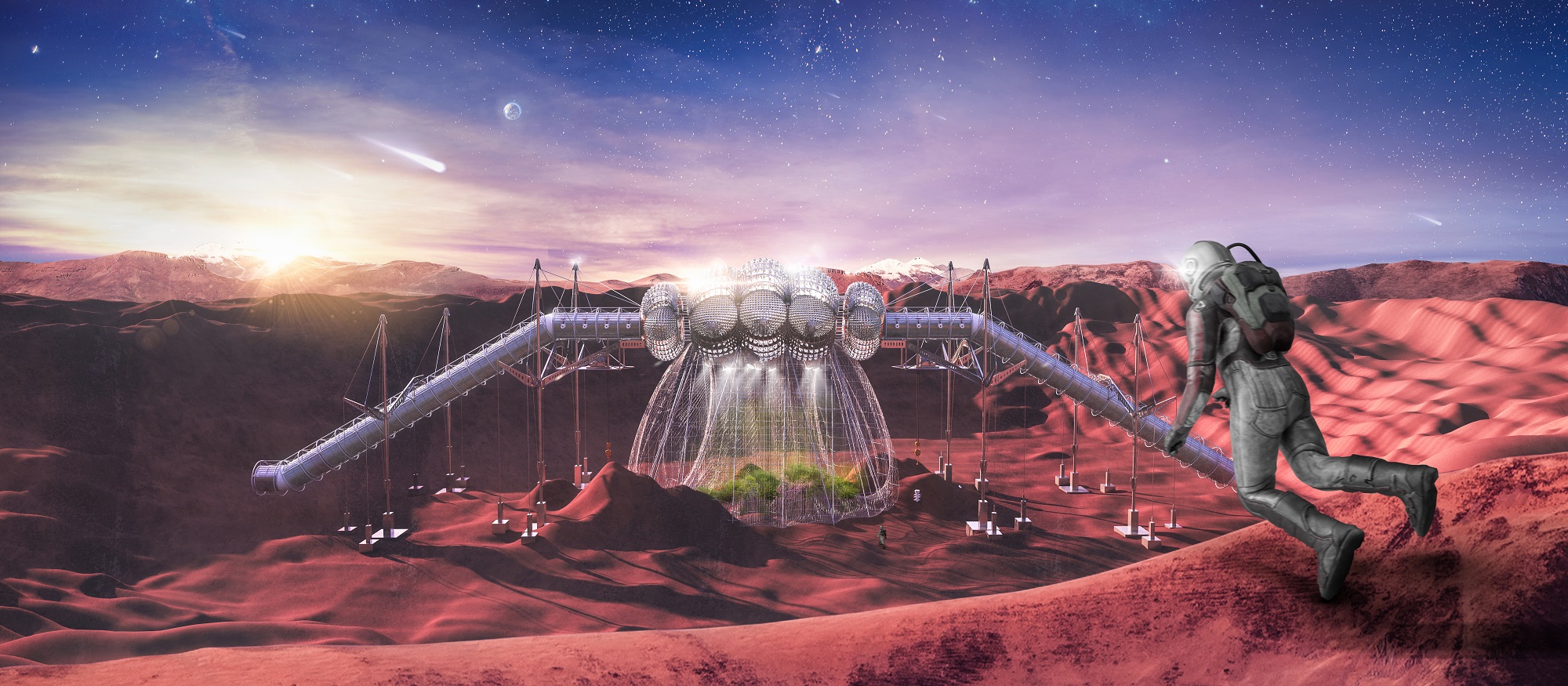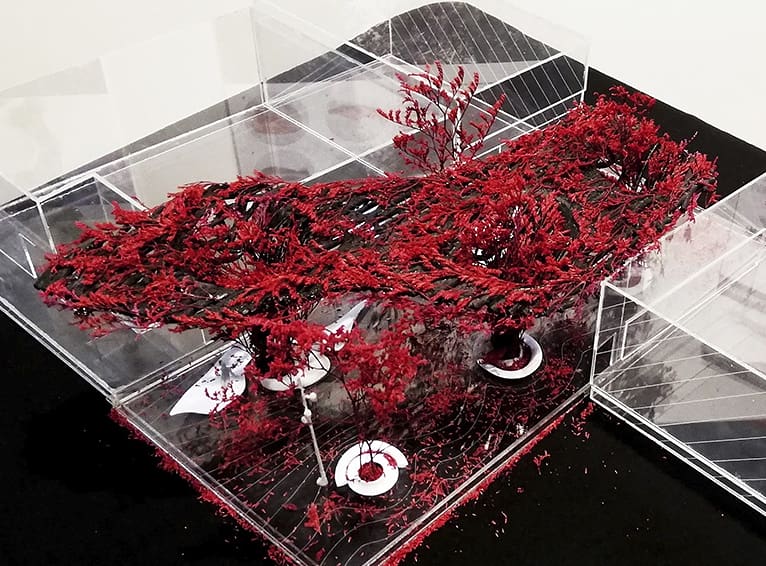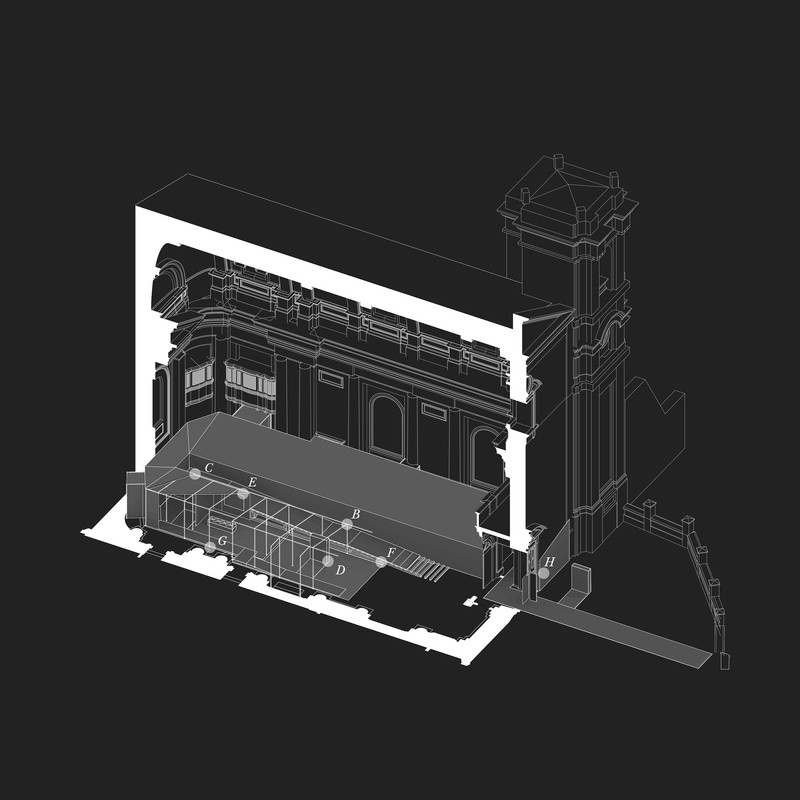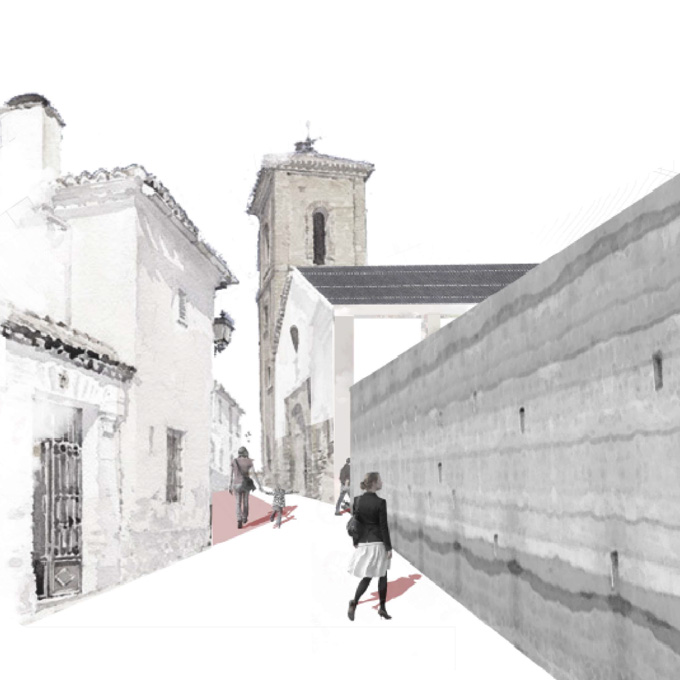Gale Crater, Mars
2021
Universidad Europea de Madrid
@alvaro.gser
The project arises after rethinking the domesticity of the future, pointing towards the stars. Inhospitable spaces that have to be transformed into homes for a permanent crew.
The Cabinet of Ecosystemic Wonders is an artifact that arises through the selection of specific plant species according to issues of productivity and terrestrial representativeness, to create with them a series of human-non-human multi-species cohabitation ecosystems, where the typologies of life and rules of coexistence emerge after the sharing of different organisms.

To achieve this, a continuous but segmented architectural space is conceived into different biomes, each with different climatic conditions achieved through a system of reactive roof installations and smart partitions that work as airlocks isolating the most hostile areas. In these biomes, the comfort conditions of the space, the plant species, the guests and the intermediate situations as a result of cohabitation will define how people live inside and the program of the different spaces, which is always variable. In this way, different scales appear, membranes as rooms, dispersers and spaces for collaboration.

With the intention of recreating the terrestrial goodness, to organize the spaces, the ¨mediators¨ are developed, ultra-technological rotational devices with the ability to provide, in addition to a specific climatology, phenomenological events inside the spacecraft, in this way torrential rains could appear, monsoons, fog, hurricane force winds and even northern lights, depending on the time of day and the biome in which we are.

In parallel, structural criteria are established linked to the possibility of adaptation to the terrain and to the water collection system, using drills.

In the lower space, a new found ecosystem is established, a hybrid, coming from the experimentation of the interior, linked to a process of soil treatment, silica gel membranes and mediators. The objective of this intervention is the non-aggressive and productive terraforming of Mars, through cohabitation and natural adaptation. Achieving a habitat of terrestrial representativeness, a cabin of memories and goodness, of what was a home and now is the memory and the foundations of a new colony on Mars, through collaboration with our most important resource, nature and their habitants.




























